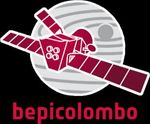Geology of the Eminescu (H-09) quadrangle: Mapping status
←
→
Page content transcription
If your browser does not render page correctly, please read the page content below
Geology of the Eminescu (H-09) quadrangle: Mapping status
Mayssa El Yazidi1, Gloria Tognon1, Valentina Galluzzi3, Lorenza Giacomini3 & Matteo Massironi1,2
1Centro di Ateneo di Studi e Attività Spaziali "Giuseppe Colombo" - CISAS, Via Venezia 15, 35131 Padova, Italy,
2Dipartimento di Geoscienze, Università degli Studi di Padova, via Gradenigo 6, 35131 Padova, Italy.
3 INAF, Istituto di Astrofisica e Planetologia Spaziali (IAPS), Via del Fosso del Cavaliere, 100, 00133 Roma, Italy.
ABSTRACT:
A geological mapping coordinated project (Galluzzi et al. (2021)) aims to deliver geological maps for Mercury's quadrangles by using
NASA/MDIS datasets. In this context, we are presenting the geological mapping status of Eminescu (H-09) quadrangle that covers the
area between latitudes 22.5°N, -22.5°S and longitudes 72°E, 144°E. The mapping is being produced on 166m/px monochrome
basemaps and a 3-color basemap with a resolution of 665m/px. The preliminary analysis of the quadrangle shows intriguing
morphology related to endogenic and exogenic processes, where intense compressive tectonic and cratering structures are the
fundamental geological events that cause the heterogeneity of the terrains. Through the mapping of Eminescu (H-09), we will deliver
the first geological map for this quadrangle with a 1:3M output scale. Once the mapping is completed, we will be able to set up the
geologic and morphological context of the quadrangle and target all the interesting features in the frame to support ESA/JAXA
BepiColombo mission.
11.Introduction
1:3M Geological Maps of Mercury: Project Team
PLANMAP and mission-level coordination SIMBIO-SYS supervision Targeting and technical support
David A. Rothery Gabriele Cremonese Cristian Carli (spectral mapping supervisor)
Matteo Massironi Fabrizio Capaccioni Nicolas Bott
Geological mappers Alain Doressoundiram Francesca Zambon
Valentina Galluzzi (maps supervisor)
Pasquale Palumbo
Lorenza Giacomini
Laura Guzzetta
Anja Lentz
Alexander Lewang
Chris Malliband Completed & published
Paolo Mancinelli
David Pegg Completed
Felix Prüße In progress
Andrea Semenzato Scheduled
Gloria Tognon
Jack Wright Not scheduled
Mayssa El Yazidi
Luigi Ferranti
Harald Hiesinger
Cristina Pauselli
Color/compositional maps
Cristina Re Fig.1. Status of the European coordinated quadrangle mapping of Mercury
Michele Zusi (Galluzzi et al. (2021))
13 - 24 September 2021 Europlanet Science Congress 2021 22.Methodology
Data Scale and Symbology
As a basemaps, we used the following available data Output Scale: 1:3M
derived from the MESSENGER Mercury Dual Imaging Mapping scale: 1:400K
Systems (MDIS): Symbology:
- Monochrome mosaic Basemap Reduced Data Record (BDR, ~166 Based on the Federal Geographic Data Committe (FGDC) and
m/px) United States Geographic System (USGS) recommendations
Monochrome mosaics with different incidence angles and illumination with appropriate revisions.
conditions (LOI, HIE and HIW, ~166 m/px) Linear features
Legend: Surface
- Enhanced-color global mosaic (665 m/px) structures
- RGB-color global mosaics (665 m/px) Geological units features
- For the Topography, we used USGS Global DEM (665m)
Geological contact Linear features
Point features morphology
Fig.2. Various basemaps used for Eminescu mapping.
13 - 24 September 2021 Europlanet Science Congress 2021 33.Results
Coordinates: Projection System:
72°E - 144°E, 22,5°N - 22,5°S Equirectangular
The mapping of the Eminescu quadrangle
(Fig.3) will help to raise the global mapping
status of Mercury, and by the current work, we
are reaching up to approximately 50% of the
surface of Mercury, with a 1:3M output scale.
We were able to carry out a target list (Fig.4)
with 38 interesting features on the area,
varying between structures and volcanic
features, hollows, terrains, and craters, for
future study and exploration by the SIMBIO-SYS
instrument onboard the BepiColombo mission.
75%
Progress
Fig.4. Examples of some selected targets
Fig.3. Mapping status of Eminescu (H-09)
13 - 24 September 2021 Europlanet Science Congress 2021 43.Results
Main Geological processes
The surface geomorphology of Eminescu quadrangle, shows that the
craters and faults are the main features that dominate the area
(Fig.5). The Fig.6 shows evidence of two stages of compressive
deformation by two distinct sets of tectonic structures following
NE–SW and NW–SE directions. The elongated form of Beagle Rupes
(Fig.7), indicates, apparently that this crater is formed by an oblique Fig.5. View of part of densely
impact, and crossed afterward by various faults, which generate the cratered and tectonized terrain in
formation of a complex zone. the southern part. Image centered
The Eminescu crater is one of the interesting features in this at 94.36°E, -10.14°N
quadrangle, since it is relatively young and it's characterized by
extensive ejecta for one radius from the crater's rim and a recently
hollowed central peak (Fig.8.).
Fig.6.Low relief ridges (red
Fig.8. Eminescu crater. Image arrows) crossed by a wrinkle
between 12.3°N, 8.8°N lat ridge (blue arrows) and by
and 115.9°E, 112.2°E lon the large lobate scarps
(black arrows). Image
centered at 4.77°N, 1.61°N
Fig.7.Beagle Rupes, cross-cut by main
Lat and 78.77°E, 77.91°E Lon
faults, generate the creation of
complex feature. Image at 100.91°E, -
2.36°N
13 - 24 September 2021 Europlanet Science Congress 2021 5Discussion and Conclusion
The selection of Eminescu quadrangle among the scheduled quadrangles to be mapped was
based on its wealth of many interesting features and on the color variation between the
different terrain types. Almost 75% of the quadrangle was mapped and the initial analysis of this
quadrangle shows two major processes that shape the surface : A compressive tectonism and
intensive cratering.
Future work
Beagle Rupes, Eminescu crater, hollow deposits and pyroclastic deposits at the margin of the
Caloris basin are all interesting targets to study and explore. These features and their enhanced
color variability will probably require a higher-resolution study by integrating the
geomorphological map with spectral data. Once the 1:3M geological map for Eminescu (H-09) is
completed, we will deliver Morpho-stratigraphic and Chrono-stratigraphic maps and complete
the surface analysis to understand the geomorphology of the quadrangle and also contribute to
the understanding and the exploration of the planet Mercury.
Acknowledgements
This research has been supported by European Union’s Horizon 2020 under grant
agreement N° 776276-PLANMAP.
References
Galluzzi et al. (2021), PGM Meeting 2021, LPI Contrib. No. 2610.
© V.Galluzzi
13 - 24 September 2021 Europlanet Science Congress 2021 6You can also read


























































